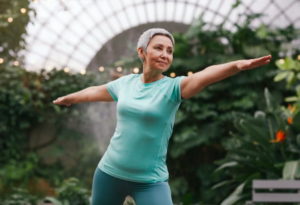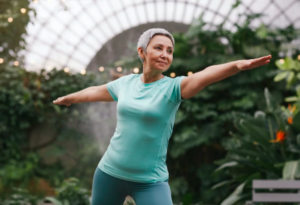
(image source – Pexels)
Maintaining Mobility in Old Age
Maintaining mobility in old age is intrinsically linked to independence. Very few elderly people actually want to leave their own homes with a move into residential care often following a fall when they are no longer able to live safely alone.
This situation can often be avoided or delayed if someone is able to maintain mobility in old age. This would enable someone to move freely with ease and manage day to day activities such as washing, dressing and cooking.
This is a subject that has been studied for years with the outcome always being that our quality of life is intrinsically linked to mobility.
In later years, mobility is important as it can help you remain independent. It can also improve your inclination to take part in physical activities, improving your attitude to, and quality of life.
An increase in mobility will also improve your balance and coordination, resulting in an improved protection against injuries.
Muscle damage
As seen in a previous blog post, muscle damage recovery can take longer in older people. Making a conscious decision to exercise more to increase and maintain mobility may help avoid such damage in the first place.
An increase in mobility often leads to enhanced physical health in older people. It can also boosts cognitive functioning and confidence.
Improving Mobility in Older Age
In older age many age-related factors such as hormonal changes, poorer nutrition and medical conditions can negatively affect mobility. With daily activities proving more difficult this can lead to anxiety, depression, fear of falling and an overall loss of confidence.
A study published by Age and Ageing (The International Journal of the British Geriatrics Society) showed that it is possible to improve mobility in older people through exercise.
Different Ways to improve mobility
It’s possible to boost mobility in the following ways:
Regularly Exercising
With simple stretching routines, older people can mobilise joints and maximise the potential of other workouts.
All movements incorporate balance. Mobility is about effortless movements. Therefore, to improve mobility older people should include balance exercises in their daily routines. Mobility requires muscle strength, so seniors should do some strength training exercises at least two days a week. When it comes to mobility, back muscles play a very significant role. Seated yoga or pilates are both useful ways to build strength whilst improving balance. Aqua aerobics is also a great idea as it is fun and your body is supported by the water.
Getting Professional Help
For older people, it is important to consult a doctor before starting a mobility-increasing program. The doctor will take into consideration the medical history, the present state of fitness, and any long-term medical conditions. Working around these factors will be safer and easier with the advice of a specialist. Physiotherapists can also offer recommendations for reducing pain and increasing mobility. They can help develop a good exercise program according to your needs and current physical situation. They might also offer massages and use other techniques aimed at improving mobility.
Nutritional Support
Good health starts with a good diet. Although the connection may not be immediately apparent, there is a strong link between nutrition and mobility. Improved mobility requires energy, muscular strength, and healthy bones. Older people should consume a balanced diet containing Vitamin D, calcium, and magnesium which help aid mobility. Dietary supplements (taken only after consultation with a doctor) might help too.
Overcoming Challenges
Increasing mobility in old age has its challenges but it is possible. You need to start by setting realistic goals. The support and efforts of caregivers might also help you reach your mobility goals. You might face some discomfort and limitations related to medical conditions. Some challenges can be overcome with the help of specialists. Staying motivated is essential. Having some fun with mobility exercises can boost motivation.
Key Takeaways
- The efforts to improve mobility might help in reducing the negative impact of existing medical conditions.
- Improving mobility will prove beneficial for physical and mental health.
- Most forms of physical activity will help mobility in some way or the other. It is essential to start physical activity at a level that is suitable to the current state and any medical conditions. It is advisable to increase physical activity gradually.
- Kindness, encouragement, and support are key when trying to assist seniors in regaining mobility and independence. Seniors can also encourage their friends to take more control of their lives through improved mobility.

